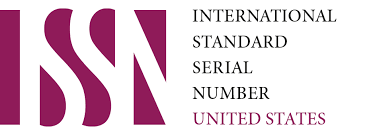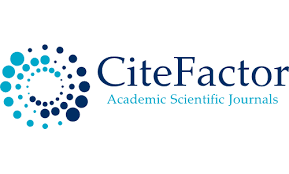Study of Hybrid Cognitive Radio Networks Based On Access to the Frequency Spectrum and Their Ability to Succeed
Keywords:
Hybrid-spectrum-access, CRN, radio cognitiveAbstract
In this research, we will study the performance of the network and users in light of accessing the hybrid spectrum in the large (huge) cognitive radio network (CRN) so that we have primary users and secondary users when a primary user transmits on the same channel and at a uniform time (the same time) the user units are eclipsed Sub-state the channel through the sensing channel and draws the appropriate scheme for accessing the channel (it can be an overlay) for transmissions based on the results of the sensing channel. Controlled in order to produce less interference (the interference in the first network is less than the interference in the preceding), and when we don't have primary users, the secondary user units do it = a transmission process under the overlay channel and thus increase the flow based on random geometry.
References
Chen, Z.; Pappas, N.; Bjornson, E.; Larsson, E.G. Age of information in a multiple access channel with heterogeneous traffic andan energy harvesting node. In Proceedings of the IEEE INFOCOM Workshops, Paris, France, 29 April–2 May 2019; pp. 662–667.
-Yates, R.D.; Kaul, S.K. The age of information: Real-time status updating by multiple sources. IEEE Trans. Inf. Theory 2019, 65,1807–1827
-Haenggi, M.; Ganti, R.K. Interference in large wireless networks. Found. Trends Netw. 2008, 3, 127–248
-Haenggi, M. The meta distribution of the SIR in Poisson bipolar and cellular networks. IEEE Trans. Wirel. Common. 2015, 15,2577–2589
-Yang, H.H.; Arafa, A.; Quek, T.Q.; Poor, H.V. Locally adaptive scheduling policy for optimizing information freshness in wirelessnetworks. In Proceedings of the IEEE Global Communications Conference, Waikoloa, HI, USA, 9–13 December 2019;
-Tefek U.; Lim, T. Interference management through exclusion zones in two-tier cognitive networks. IEEE Trans. Wirel. Commun.2016, 15, 2292–2302
-Baccelli, F.; Blaszczyszyn, B. Stochastic Geometry and Wireless Networks, Volume I—Theory; Now Publishers: Boston, MA, USA, 2010.
-Bhowmick, A.; Prasad, B.; Roy, S.D.; Kundu, S. Performance of cognitive radio network with novel hybrid spectrum accessschemes. Wirel. Pers. Commun. 2016, 91, 541–560.
-Chen, Y.; Lei, Q.; Yuan, X. Resource allocation based on dynamic hybrid overlay/underlay for heterogeneous services of cognitiveradio networks. Wirel. Pers. Commun. 2014, 79, 164–1664.
-Usman, M.; Koo, I. Access strategy for hybrid underlay-overlay cognitive radios with energy harvesting. IEEE Sen. J. 2014, 14,3164–3173.
-Shaker, R.; Khakzad, H.; Taherpour, A.; Khattab, T.; Hasna, M.O. Hybrid underlay/overlay cognitive radio system withhierarchical modulation in the presence of channel estimation error. In Proceedings of the IEEE Global CommunicationsConference, Austin, TX, USA, 8–12 December 2014;
-Mankar, P.D.; Chen, Z.; Abd-Elmagid, M.A.; Pappas, N.; Dhillon, H.S. Throughput and Age of Information in a Cellular-basedIoT Network. arXiv 2020, arXiv:2005.09547.
-Usman, M.; Koo, I. Access strategy for hybrid underlay-overlay cognitive radios with energy harvesting. IEEE Sen. J. 2014, 14,3164–3173.
-Mankar, P.D.; Chen, Z.; Abd-Elmagid, M.A.; Pappas, N.; Dhillon, H.S. Throughput and Age of Information in a Cellular-basedIoT Network. arXiv 2020, arXiv:2005.09547.
-Hu, Y.; Zhong, Y.; Zhang, W. Age of information in Poisson networks. In Proceedings of the IEEE International Conference onWireless Communications and Signal Processing, Hangzhou, China, 29–31 July 2018; pp.
- Okegbile, S.; Maharaj, B.; Alfa, A. Malicious users control and management in cognitive radio networks with priority queues. InProceedings of the IEEE VTC Conference, Victoria, BC, Canada, 18 November–16 December 2020.
- Okegbile, S.D.; Ogunranti, O.I. Users emulation attack management in massive internet of things enabled environment. ICTExpress 2020, 6, 353–356.
-Okegbile, S.D.; Maharaj, B.T.; Alfa, A.S. Stochastic geometry approach towards interference management and control in cognitiveradio network: A survey. Comput. Commun. 2021, 166, 174–195.
-Mankar, P.D.; Abd-Elmagid, M.A.; Dhillon, H.S. Spatial distribution of the mean peak age of information in wireless networks.arXiv 2020, arXiv:2006.00290.
-Leng, S.; Ni, X.; Yener, A. Age of information for wireless energy harvesting secondary users in cognitive radio networks. InProceedings of the IEEE International Conference on Mobile Ad Hoc and Sensor Systems, Monterey, CA, USA, 4–7 November2019; pp. 353–361.
-Zou, J.; Xiong, H.; Wang, D.; Chen, C. W. Optimal power allocation for hybrid overlay/underlay spectrum sharing in multibandcognitive radio networks. IEEE Trans. Veh. Technol. 2012, 62, 1827–1837.
-Song, H.; Hong, J. P.; Choi, W. On the optimal switching probability for a hybrid cognitive radio system. IEEE Trans. Wirel.Commun. 2013, 12, 1594–1605
Downloads
Published
Issue
Section
License

This work is licensed under a Creative Commons Attribution-NonCommercial 4.0 International License.
User Rights
Under the Creative Commons Attribution-NonCommercial 4.0 International (CC-BY-NC), the author (s) and users are free to share (copy, distribute and transmit the contribution).
Rights of Authors
Authors retain the following rights:
1. Copyright and other proprietary rights relating to the article, such as patent rights,
2. the right to use the substance of the article in future works, including lectures and books,
3. the right to reproduce the article for own purposes, provided the copies are not offered for sale,
4. the right to self-archive the article.












